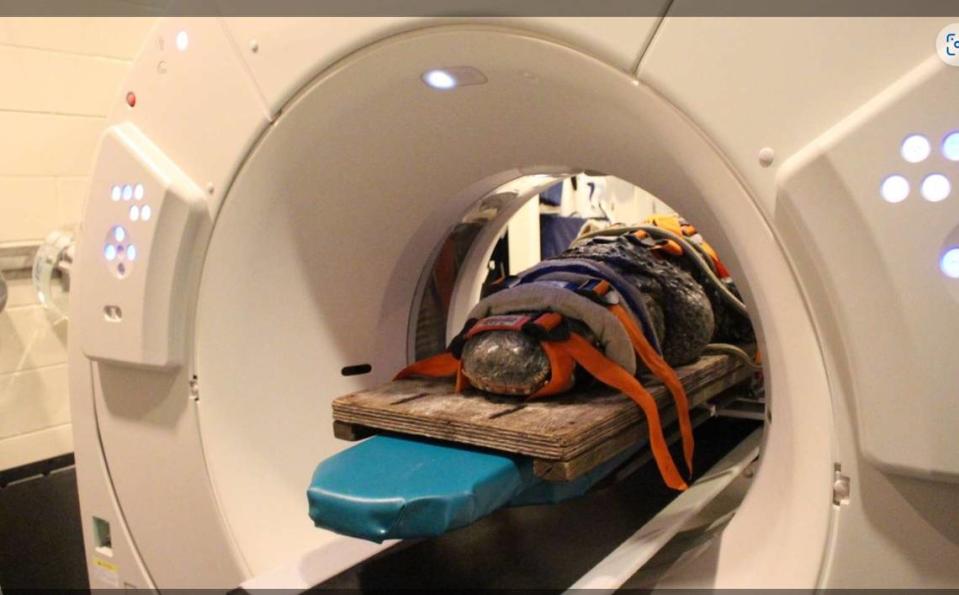An alligator at a Florida zoo was ‘behaving strangely.’ See what happened next
Yes, even alligators have to go to the doctor.
According to a Facebook post from the University of Florida’s College of Veterinary Medicine, a longtime resident of St. Augustine Alligator Farm Zoological Park named Brooke wasn’t acting like himself in the lagoon where he lives.
Apparently, Brooke — named for the Brookfield Zoo in Chicago, where he came from originally around 20 years ago — was displaying “intermittent head-rolling,” which is not normal behavior, said the post. The zoo, on its own Facebook post about the matter, added that one of its most popular stars was “behaving strangely.”
So last week, the 376-pound beast was transported to the college hospital in Gainesville, about 75 miles west of the zoo, for “a thorough workup.”
During the appointment, Brooke underwent several medical procedures, including a blood draw. In one picture a UF vet sits on the gator’s back to obtain the sample. Brooke is anesthetized, eyes taped shut and paws hanging over the side of the operating table.
“We assure you this was not painful to him in any way and was only for a brief amount of time,” says the post.

The gator is also seen getting an X-rays of his lungs, along with a CT scan of his giant head.
The zoological medicine service team determined that the “unusual behavior” was caused by an ear infection. After receiving medicine, Brooke was able to return to the Alligator Farm later in the day.
People who saw post were curious about the location of alligators’ ears, the school said.
Answer: They are directly behind the eyes and “can close tightly to prevent water from getting in.”
A yellow circle on the zoo’s post shows one of Brooke’s ears.

